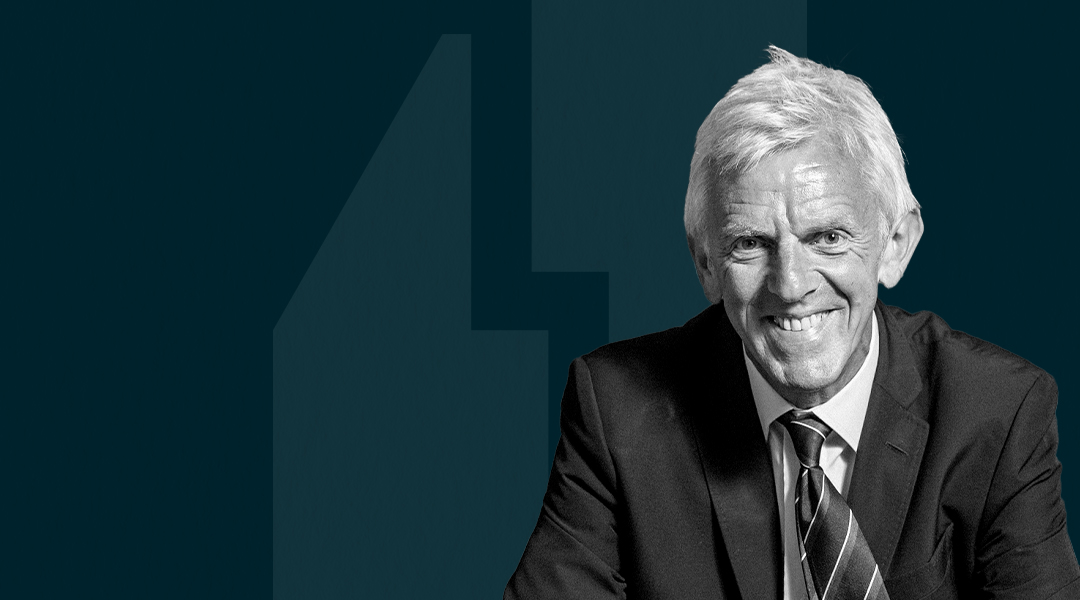The six tips to ensure your organization has a breakthrough – and not a breakdown – in times of crisis

It’s tempting to say that in 2021, the global economy will continue to recover from last year’s Coronavirus-induced downturn. But how can senior executives properly gauge further risks and withstand any new shocks? To achieve genuine agility and resilience, companies must first commit to creating stability in their teams and organizations.
Here are Professor Hooijberg’s six tips for turning the crisis into an opportunity for you and your organization:
- Recognize we live in a VUCA world
With the sweeping global pandemic affecting nearly every person, every company and every country on the planet, it is important to acknowledge the four VUCA factors that have the most influence: volatility, uncertainty, complexity and ambiguity.
“Yes, these are volatile times – the unstable situation in 2020 was mostly out of our control,” said Hooijberg. “And the uncertainty of it all was a major challenge, as we were unsure of what would happen next and the impact it would have on our organizations.”
The layers of challenges – its complexity – left senior executives unsure where to focus their efforts, while the ambiguity of the environment plagued all decision-making.
- Seek out innovation wherever possible
Innovation has developed in three main areas. Whether it’s the running of your current business or creating a new business, major developments were made in the past year. Managing a cash flow crisis forced organizations to evaluate each aspect of their business, taking the opportunity to clean up and streamline processes (or clients, or services) that should have been eliminated.
“What new services and what new clients can you target?” asked Hooijberg. “And how can you deliver value in an innovative way in this changed ecosystem?”
The third area that saw innovation was our way of working, with new tools emerging as phenomenal alternatives for face to face meetings. Camaraderie could be maintained even with most staff working from home via virtual events, coffees, chats and onboardings.
“Zoom and other virtual meeting applications are connecting people from all over the world without travel,” said Hooijberg. “This is a real improvement compared to the past.”
- Recognize the differences between face-to-face and virtual interactions
A virtual setting can provide advantages to innovation and creativity by increasing access to experts regardless of where in the world they are based. It opens up the playing – and listening – field to introverts, who can interact in ways that are more comfortable to them.
“We can ‘bring in’ people and get their ideas easily,” commented Hooijberg. “It’s also beneficial for those in the ‘out group’ that aren’t the managers’ typically favored employees.”
Machine Learning and Artificial Intelligence programs are making great strides in understanding this better. Tools like Humanyze, Gong and RIFF can analyze which interactions work (and which do not) and provide valuable insight for what cultural change is needed.
“While the loudest voice in the room tends to dominate at in-person meetings,” said Hooijberg, “in a virtual setting we can better calibrate what people really think by hearing all their voices.”
- Take stock of the past year
2020 was a wild ride by any standard. By evaluating your behavior and decisions over the past year, you can determine how well you have adapted – and what more can be done both for your team and your business.
“The story keeps changing and it’s not the same all over the world,” said Hooijberg. “We need to focus on how we can create value beyond this experience by listening to our people.”
Accepting change has become an important determinant for a leader’s perceived success. From challenges that existed before the pandemic – the gig economy to e-commerce to trade wars – to the virus itself and the health care crisis of today, leaders who have embraced change have increased trust from their teams.
“We’ve seen who the true leaders are over the past 12 months,” said Hooijberg. “With a trusted leader in charge, your organization can gain momentum and increase speed of implementation.”
- Set the right foundation for breakthroughs
Breakthroughs can only happen if the right foundation – primarily cultural – is already in place. By channelling pre-existing pockets of excellence and adapting them to scale, organizations can implement potential breakthroughs faster.
“Are you paralyzed by fear or excited to do something different?” asked Hooijberg. “What makes innovation succeed is taking the time to have an environment of trust, where people are willing to share their crazy ideas without being afraid of being ridiculed.”
Creating a healthy corporate culture must be done before a crisis hits, says Hooijberg: “If you try to do this afterward, you’ll be stuck with whatever culture you have. Build trust and safety, and provide a platform that enables you to respond in adaptive ways.”
- Buck the trend, keep the silos
Many experts call for breaking down silos, but Hooijberg is not convinced, favoring this accumulation and integration of deep knowledge in specific areas.
“We do want to see better sharing across the organization in business-relevant ways though,” said Hooijberg. “Matrix management is key here – bringing knowledge and experience together where it’s most needed, linking them to concrete business problems.”
This, however, must also include leveraging your new ecosystem to drive growth. By following the example of famed inventor of the lightbulb Thomas Edison, Hooijberg says you can “organize your invention machine”.
“Essentially, Edison had the first agile team before agility became an overused buzzword,” said Hooijberg. “Diverse staff with cross-functional teams, divided into smaller teams working on new prototypes made him able to be the first to really scale-up technology and R&D.”
By implementing these six tips, senior executives can have a head start on crisis-proofing their organizations. That said, Hooijberg believes that luck also plays an important role in success.
“What’s luck got to do with it?” he quipped. “My favorite definition of luck is that it is where preparedness meets opportunity.”
If you enjoyed this webinar and are interested in learning about leadership and organizational behavior in more detail with Professor Hooijberg, we invite you to discover the following program: Breakthrough Program for Senior Executives – Do what matters (starts 20 April 2021).
Research Information & Knowledge Hub for additional information on IMD publications

Six ways leaders can shape corporate reputation building strategies within their organizations, drawing on key insights from a Bloomberg Media study.

Managing energy in leadership helps sustain momentum. Tap into purposeful action, team cohesion, and personal conviction to stay energised and inspire others.

To navigate a turbulent business environment, CEOs must understand their landscape and align leadership thinking priorities, advises IMD’s Michael Watkins.

Only by coming to terms with your past can you hone the character and resilience to lead at your best. If you want to be a great leader, be your own case study.

By fostering a ‘we’ culture of sharing, respect, and gratitude, leaders can transform their organizations to shine in an inclusive world.

Effective communication is key to leading a team – but excessive talking can cause disengagement and frustration. Answer the following questions honestly to discover if you're talking too much – and read on for techniques to get more out of people...

As executives and organizations struggle to deal with an increasingly turbulent and complex world, here is a framework for becoming a caring and ethical leader.
The case explores TBC Bank Group’s remarkable journey from a small Georgian bank to a regional leader in digital financial services across Central Asia. Founded in 1992 with just US$500 in initial capital, TBC evolved into Georgia’s largest financ...

IMD's Heather Cairns-Lee and leadership expert Eugene Sadler-Smith discuss why, in a data-driven world, intuitive intelligence is a critical skill that enhances decision-making, enabling leaders to act decisively in uncertainty.

Discover the opportunity of community with ‘community-centricity’- an approach for leaders to prioritize customers while driving economic and societal impact.
in I by IMD
Research Information & Knowledge Hub for additional information on IMD publications
Research Information & Knowledge Hub for additional information on IMD publications
Research Information & Knowledge Hub for additional information on IMD publications
Research Information & Knowledge Hub for additional information on IMD publications
in I by IMD
Research Information & Knowledge Hub for additional information on IMD publications
Research Information & Knowledge Hub for additional information on IMD publications
in I by IMD 27 February 2025
Research Information & Knowledge Hub for additional information on IMD publications
Research Information & Knowledge Hub for additional information on IMD publications
Research Information & Knowledge Hub for additional information on IMD publications
in I by IMD
Research Information & Knowledge Hub for additional information on IMD publications

